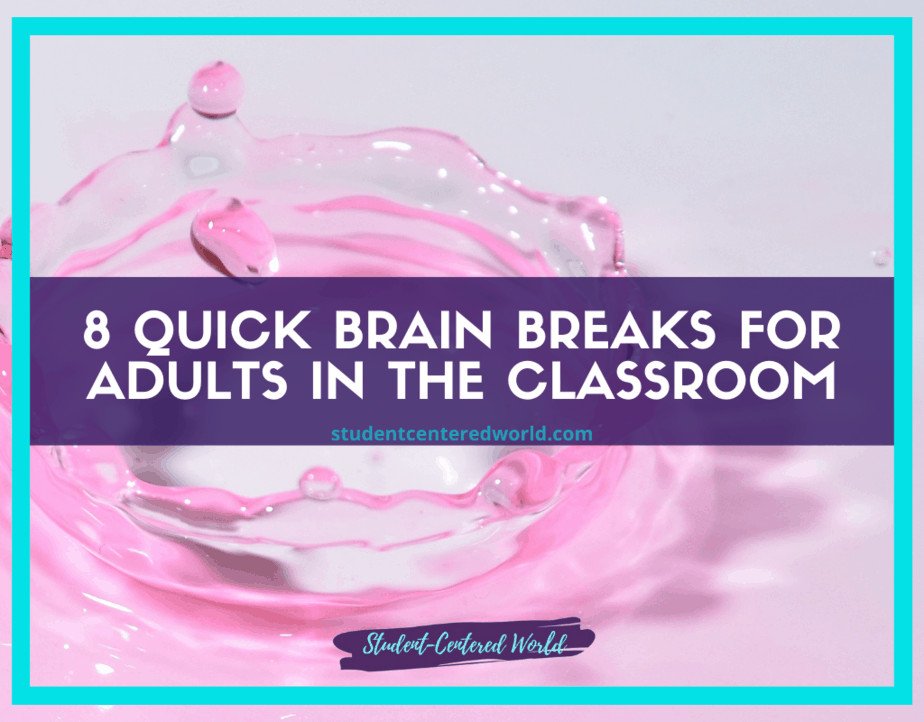Finding Teacher Work-Life Balance to Maintain Sanity
Finding teacher work-life balance is hard.
Balancing home life and professional responsibilities is a unique challenge for teachers. Achieving a healthy work-life balance has always been a struggle, whether teaching in person or online. Maintaining this balance is crucial for your physical health and mental well-being.
When teaching in a classroom, school hours may be set, but many teachers continue working into the evenings, answering work emails and planning lesson plans. High school teachers and elementary teachers alike face long hours during the school year, often dealing with a heavy workload and limited resources.
The importance of work-life balance cannot be overstated, as the stay-late culture in public schools often leads to an excessive workload and little free time.
Setting boundaries and taking control of your time are essential steps toward a better work-life balance. Teachers must navigate the unique challenges of different schools, manage extracurricular activities, and adapt their teaching methods, all while ensuring they have the necessary prep time and professional development.
Without healthy boundaries, the prolonged period of extra hours can lead to poor mental health and physical symptoms, making it difficult to maintain personal relationships and achieve a good night’s sleep.

However, there are things that we can consciously do to change this narrative, but it’s up to us to follow through.
Why Work-Life Balance is so important for teachers
It’s no secret how much time and effort teachers invest in their work. Many throw away the concept of work-life balance, thinking it simply can’t exist. The truth is, it’s not that work-life balance is impossible, but it’s never perfectly balanced.
Work and personal life will ebb and flow, but the key is ensuring it’s not one-sided. A healthy work-life balance means setting boundaries, prioritizing personal well-being, and occasionally putting yourself first.
Seven Ways to Achieve a Healthy Teacher Work-Life Balance:
- Make Self-Care a Routine:
Prioritize your personal well-being. Admit you need to focus on yourself, plan for self-care, and integrate it into your daily life. - Stop Overworking:
Teaching is a marathon, not a sprint. If you’re working over 40 hours a week, it’s time to cut back. Effective time management is essential. - Learn to Say No:
Teachers often take on additional responsibilities out of guilt. Learn to say no to extra work to prevent burnout and ensure you can effectively support your students. - Track Daily Accomplishments:
Keeping a log of your daily achievements can help you manage your workload better and provide a sense of accomplishment. - Plan Your Weekends:
Ensure a balance between work and personal time by planning your weekends at least a week in advance. - Unplug During Breaks:
Fully disconnect from school-related activities during breaks to recharge and focus on your personal life. - Use Sick Days When Needed:
If you’re not feeling well, take a sick day. Pushing through illness benefits no one and can negatively impact your teaching.
Determining Your Own Work-Life Balance
Maintaining a healthy work-life balance is undeniably challenging, especially for teachers known for their multitasking skills and dedication. Often, this dedication leads to working at all hours, setting unrealistic expectations, and ultimately resulting in burnout.
To prevent this, here are four essential steps to help you determine and maintain a healthier balance.
Step 1: Set Clear Boundaries
The first step in achieving a healthy work-life balance is setting clear boundaries. Establish specific office hours for responding to work emails and stick to them. Communicate these times clearly to your students and their parents. Let them know that you will only respond to emails during these designated hours. This helps manage their expectations and allows you to have uninterrupted personal time.
Boundaries also mean not bringing work into your personal life. Avoid checking your work email or engaging in school-related tasks outside of your established work hours. By doing so, you can ensure that your home life remains a space for relaxation and personal activities.
Step 2: Create a Realistic Schedule
Creating a realistic schedule is crucial in balancing your professional responsibilities and personal time. Start by determining all the tasks you need to accomplish, such as lesson planning, grading, and professional development. Allocate specific time slots for each task within your work hours.
Balance your work tasks with personal activities. Include time for exercise, hobbies, and spending quality time with family and friends. If you have to catch up on your days off, it’s important not to work both days of the weekend. Reserve at least one day for rest and personal activities. This separation helps prevent burnout and keeps you energized for the upcoming week.

Step 3: Hold Yourself Accountable
Once you’ve created your schedule, it’s vital to hold yourself accountable to it. Write down your schedule and stick to it as closely as possible. Adjustments may be necessary from time to time, but avoid falling into the trap of the “just one more thing” mindset. This habit can quickly erode your personal time and lead to overwork.
Accountability can also be reinforced by sharing your schedule with a trusted colleague or family member who can help remind you to stick to your plan. Keeping a log of your activities can help you see how well you are adhering to your schedule and identify areas for improvement.
Step 4: Take Care of Yourself
Taking care of yourself is perhaps the most important step in maintaining a healthy work-life balance. Ensure your schedule includes time for regular exercise, healthy meals, and adequate sleep. Physical health is directly linked to your ability to handle stress and perform well professionally.
Avoid the temptation to check work emails or complete tasks outside of your designated work hours. This can intrude on your personal time and prevent you from fully disconnecting from work. Unplugging from work is essential for mental rejuvenation and maintaining a clear separation between your professional and personal lives.
Incorporate activities that you enjoy and that help you relax into your daily routine. Whether it’s reading, gardening, or spending time with loved ones, engaging in activities that bring you joy can significantly improve your overall well-being.
Additional Tips for a Healthier Work-Life Balance
Maintaining a healthy work-life balance is essential for teachers to sustain their physical health, mental well-being, and professional effectiveness. Here are some comprehensive strategies to help you achieve a better balance between your personal lives and professional responsibilities.
Use Technology Wisely
Technology can be a double-edged sword for teachers. While it can create additional distractions and stress, it also offers tools that can significantly improve time management and reduce workload. For instance, Google Drive is an excellent tool for streamlining administrative tasks and collaborative work. You can use it to share lesson plans, sub plans, and resources with colleagues, reducing the need for face-to-face meetings and endless email threads.

Consider using online courses for professional development, which can be more flexible and less time-consuming than attending in-person workshops. Additionally, educational apps and software can automate repetitive tasks, such as grading and attendance tracking, giving you more control of your time and allowing you to focus on student learning and personal well-being.
Prioritize
Effective prioritization is crucial in managing the heavy workload that comes with teaching. It’s important to focus on the most essential tasks and avoid getting bogged down by less critical ones. Start by making a list of tasks and categorizing them based on their urgency and importance. This method, often referred to as the Eisenhower Matrix, helps you visualize what needs immediate attention and what can be delegated or postponed.
Set specific times for tackling the most important tasks and stick to these time slots as much as possible. For example, allocate certain hours of the day exclusively for lesson planning, grading, or professional development. This structured approach helps ensure that you complete your essential tasks within your designated work hours, allowing for more quality time and free time outside of work.
Remember, it’s equally important to set boundaries and protect your personal time. Avoid taking on extra work that is not part of your primary responsibilities, and don’t hesitate to say no to tasks that could overwhelm you or detract from your personal well-being.
Seek Support
Teaching can be emotionally taxing, and it’s essential to lean on fellow teachers and colleagues for support. Building a strong support network within your school can provide you with much-needed emotional support and practical advice. Don’t hesitate to share your struggles and successes with your colleagues. They can offer valuable insights, share their own experiences, and provide encouragement.
Engage in regular discussions with your administrator to address any concerns about your workload or work-life balance. They can help you identify areas where you might need additional resources or support, and work together with you to find solutions that promote a healthier balance.

Additionally, consider joining professional organizations or online communities for teachers. These groups often provide resources, advice, and a platform to connect with other educators facing similar challenges. Having a network of supportive colleagues can make a dramatic impact on your teaching career and overall well-being.
Take Care of Your Physical Health
Physical health is a critical component of a healthy work-life balance. Make sure to incorporate regular exercise into your routine, even if it’s just a short walk around your neighborhood. Fresh air and physical activity can significantly improve your mood and energy levels, helping you cope with the demands of teaching.
Ensure you’re getting a good night’s sleep, as lack of sleep can lead to poor mental health and decreased productivity. Set a consistent bedtime and create a relaxing nighttime routine to help you unwind and prepare for the next day.
Set Healthy Boundaries
Setting healthy boundaries between work life and personal life is essential. Decide on specific times to unplug from work, such as not checking work emails or grading assignments after a certain hour. Communicate these boundaries clearly to your students and their parents, so they understand your availability and respect your personal time.
It’s also important to take short breaks throughout the day to recharge. Use your entire lunch break to relax and enjoy a meal without thinking about work. These small breaks can prevent burnout and help you maintain a better work-life balance.
By implementing these strategies, you can achieve a healthier balance between your professional responsibilities and personal lives, leading to a more fulfilling and sustainable teaching career.
Maintaining a healthy work-life balance is crucial for personal well-being and professional success. By setting boundaries, managing your time effectively, and prioritizing self-care, you can achieve a healthier balance and avoid teacher burnout.
Stop Driving the Teacher Struggle Bus
Are you struggling with student engagement, apathy, or keeping your class on track, leading to you feeling like you’re burning out?
💫💫 There’s hope! 💫💫
If you’re ready to take the first step towards reviving student engagement and transforming your classroom, I invite you to join me for my free workshop “Reversing Student Apathy” designed to equip educators with innovative strategies that work.
This interactive workshop will provide an invaluable opportunity for educators to explore the complex factors contributing to student apathy. By examining underlying causes and discussing broad strategies, participants will be equipped to make meaningful changes in their teaching methods. The sessions are designed to be engaging and collaborative, allowing educators to share experiences and develop a collective approach to overcoming challenges in student engagement.
The workshop will also emphasize the importance of community and network building among educators. Participants will be encouraged to connect with one another, sharing insights and strategies that have been effective in their own classrooms. This network will serve as a continued resource, offering ongoing support as educators implement new tactics to inspire their students.
Highlights of the workshop include:
- A deep dive into the roots of student apathy and its impact on learning.
- General strategies for enhancing classroom dynamics to better engage students.
- The role of educator-student relationships in fostering a more inviting and interactive learning environment.
- Broad discussions on integrating innovative approaches to teaching that resonate with today’s students.
Each educator attending the workshop will gain access to a variety of general resources aimed at enriching the educational experience. Furthermore, an online community will be available for post-workshop engagement, allowing for sustained collaboration and support among peers.
This workshop is an excellent fit for teachers, administrators, and educational professionals who are passionate about reversing the trends of student disengagement and nurturing a more dynamic and responsive educational atmosphere. It presents a unique chance to join forces with like-minded professionals determined to make a significant impact on the academic and personal lives of their students.
As we strive to address these pressing challenges, the workshop offers a platform to unite and empower educators from diverse backgrounds. Registration is essential as spaces are limited, ensuring a focused and productive environment for all participants.
Don’t miss this chance to be part of a pivotal movement in education. Please register today and be part of the solution, helping to reignite enthusiasm and engagement among students and setting them on a path toward a more successful and fulfilling academic experience. Join us as we take proactive steps toward a brighter educational future.
This article was originally published on March 26, 2020







2 Comments
Sandra Adams
Brilliant – thanks for this SCW!
If you feel overwhelmed with the number of apps and ideas and platforms I suggest pick 3 that your comfortable with and just use them. For example my 3 are Nearpod, Quizziz and MS Teams – other apps are great and I’ll use them from time to time but these are the core that I begin from
https://youtu.be/9qUcNlT51i4
I’ll be making videos to send to the students/parents to help them through this time as well
https://youtu.be/41XxMJZU5ew
Please follow me, like, subscribe and share!
Jenn
Yes! I mentioned this concept yesterday in our Mastermind group Facebook Live. Do less things really well.